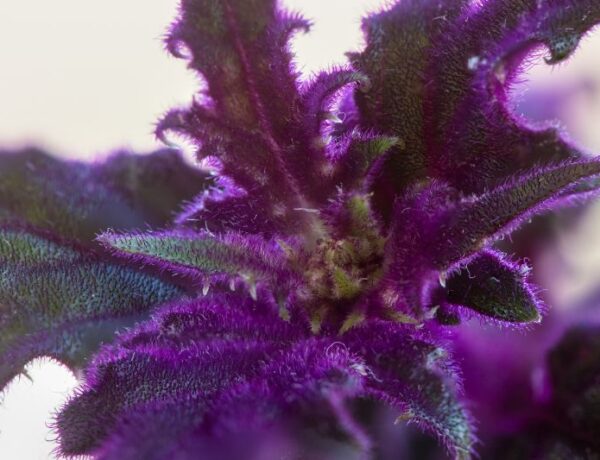Calathea Rufibarba, also known as Goeppertia rufibarba or Furry Feather Calathea, is a popular houseplant known for its striking appearance and unique texture. Its leaves resemble feathers with a velvety, “furry” texture, making it an eye-catching addition to any indoor garden.
This article will provide you with a comprehensive guide on how to care for, maintain, and propagate this stunning plant.
Table of Contents
1. General Information & Taxonomy
| Scientific name | Goeppertia rufibarba |
| Common names | Calathea Rufibarba, Furry Feather |
| Native to | Brazil |
| Toxicity | Non-toxic to pets and humans |
| Mature size | Up to 2-3 feet in height |
| Category | Perennial |
| Growth Rate | Moderate |
| Hardiness | Not frost-tolerant |

2. Calathea Rufibarba Care & Growing Requirements
» Watering
Calathea Rufibarba prefers consistent moisture but not waterlogged soil. Water the plant when the top inch of the soil starts to dry out. Using distilled water or rainwater is recommended to avoid the leaf-tip browning that can occur with tap water.
» Light
While it can thrive in low to medium light conditions, bright indirect light works best. However, make sure to avoid direct sunlight as it can scorch the leaves.
» Soil
A well-draining soil with good organic matter is best. A mixture of peat, pine bark, and perlite is recommended. The ideal pH level is around 6.5-7.0.
» Temperature
Calathea Rufibarba prefers temperatures between 65-80°F (18-27°C). It is sensitive to cold and should not be exposed to temperatures below 60°F (15°C).
» Humidity
This plant loves high humidity levels, ideally around 50-60%. A humidity tray or room humidifier can help maintain these conditions.
» Fertilizer
Fertilize every 4-6 weeks during the growing season (spring and summer) with a balanced liquid fertilizer diluted to half strength. Avoid fertilizing in winter.
3. Calathea Rufibarba Maintenance and Propagation
» Repotting
Repot the plant every 2-3 years to refresh the soil and provide more space for growth. Choose a pot that is 1-2 inches larger in diameter than the current one.
» Pruning
Pruning is generally not required but you can remove dead or yellow leaves and faded or brown leaf tips to keep the plant looking its best.
» Propagation
The most effective method for propagating Calathea Rufibarba is by division. Divide the plant during repotting, making sure each division has at least one healthy root and shoot.
4. Common Issues
» Leaves Turning Yellow
Overwatering is usually the culprit. Reduce the watering frequency and ensure the pot has good drainage.
» Leaves Turning Brown
This can be due to low humidity or the use of tap water with high mineral content. Use distilled water and increase humidity.
» Leaf Curling
This can be a sign of underwatering or low humidity. Check the soil and humidity levels and adjust accordingly.
» Fading Leaf Color
Insufficient light can lead to faded leaf color. Move the plant to a brighter location but avoid direct sunlight.
5. Calathea Rufibarba Diseases & Pests
Common pests include spider mites and aphids. Insecticidal soap or neem oil can help treat these issues. Diseases are rare but can include root rot due to overwatering. Ensure proper drainage and avoid waterlogged soil.
Conclusion
This calathea variety is a captivating houseplant that requires a bit of attention to its needs, but the rewards are well worth it. With its unique, velvety leaves and easy-to-care-for nature, it’s a lovely choice for both novice and seasoned gardeners. Follow the care, maintenance, and propagation tips outlined in this article, and your Calathea Rufibarba should thrive.






No Comments